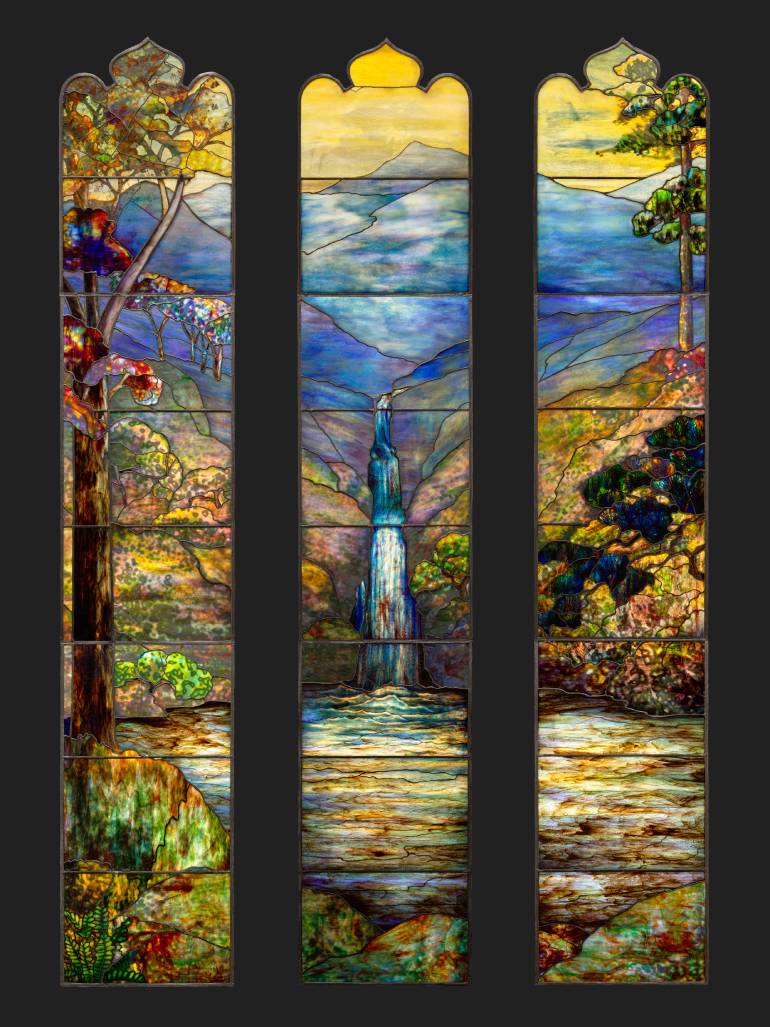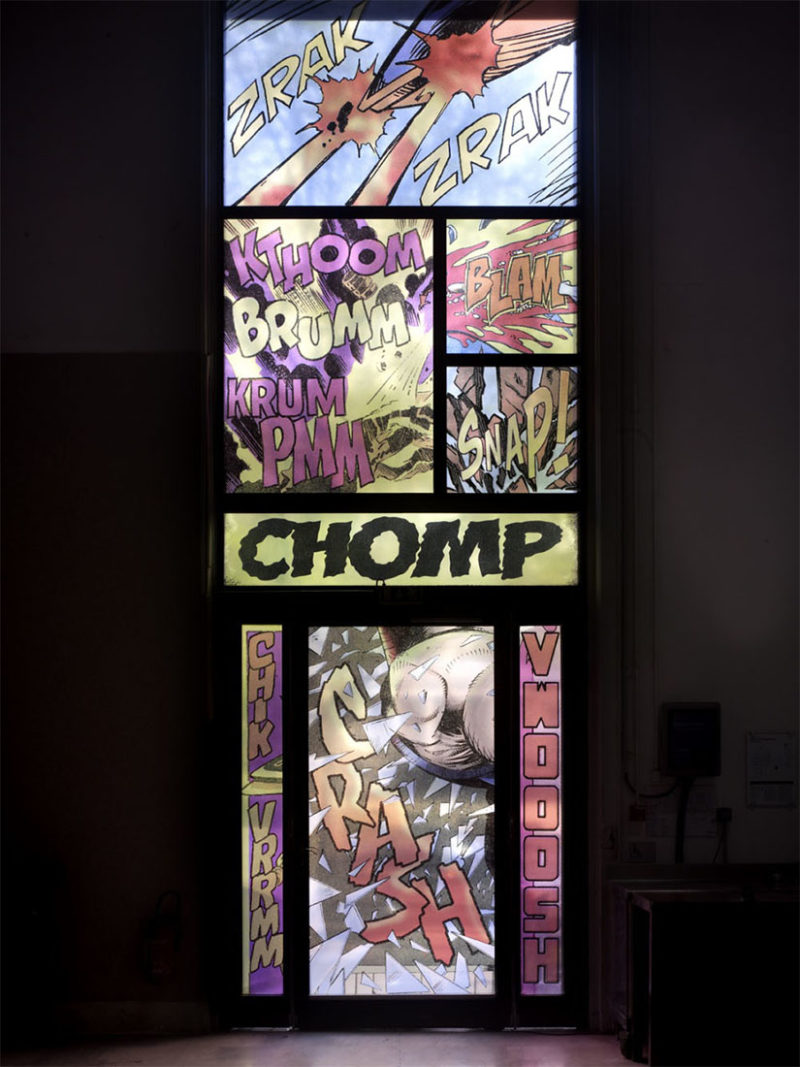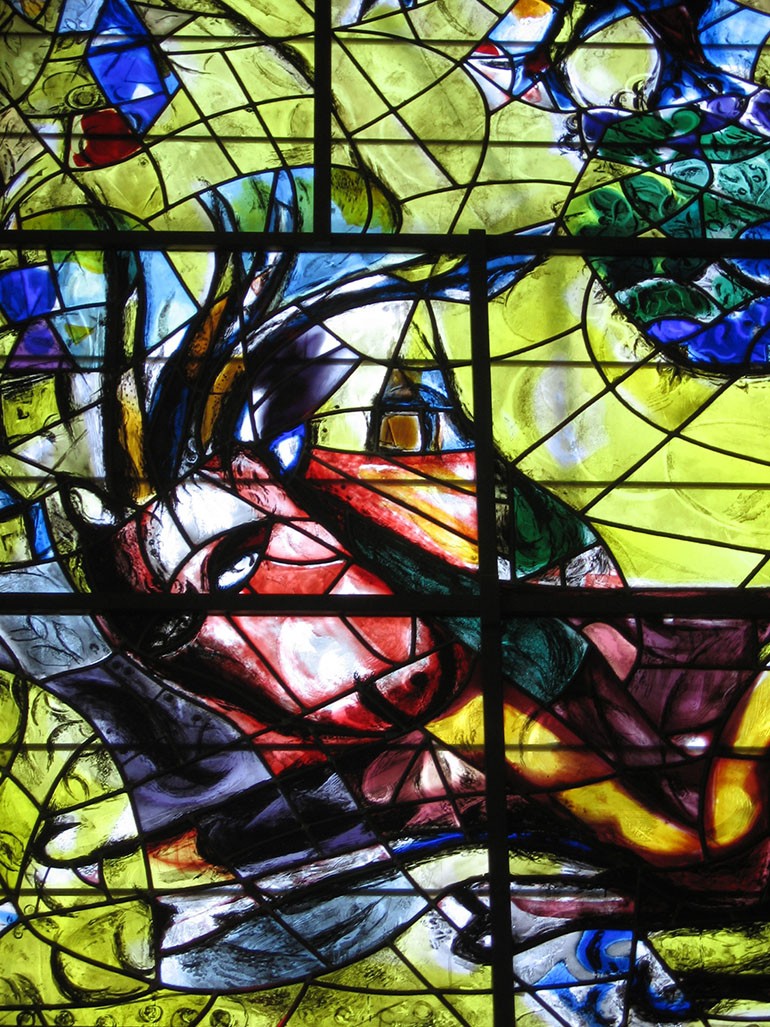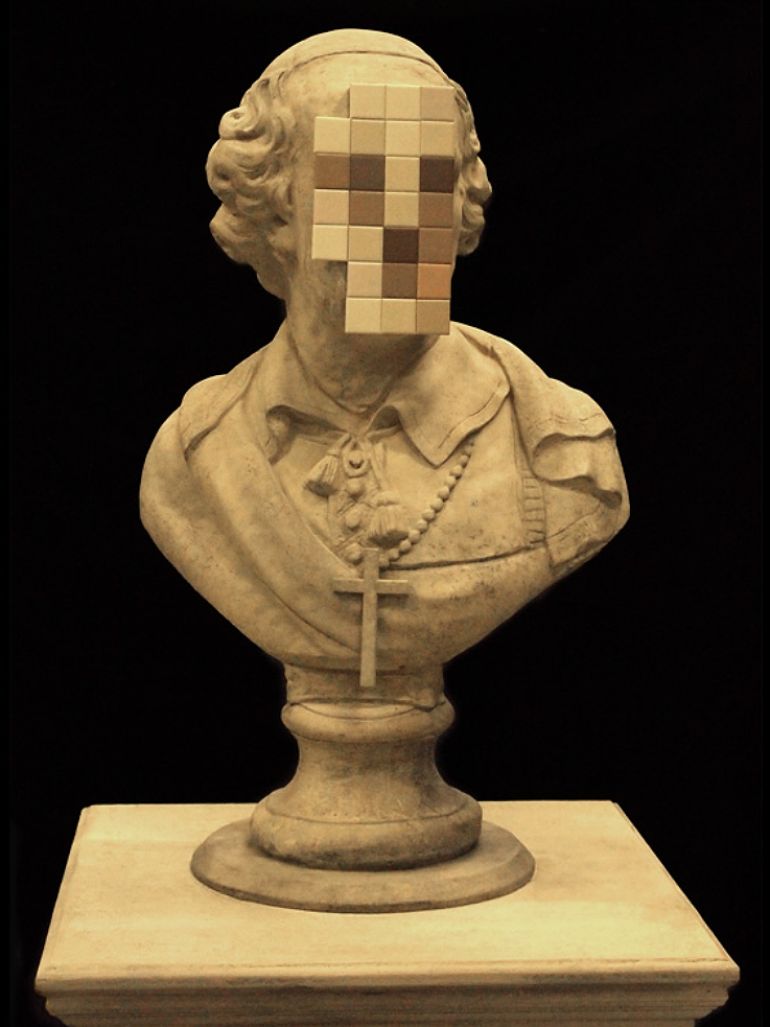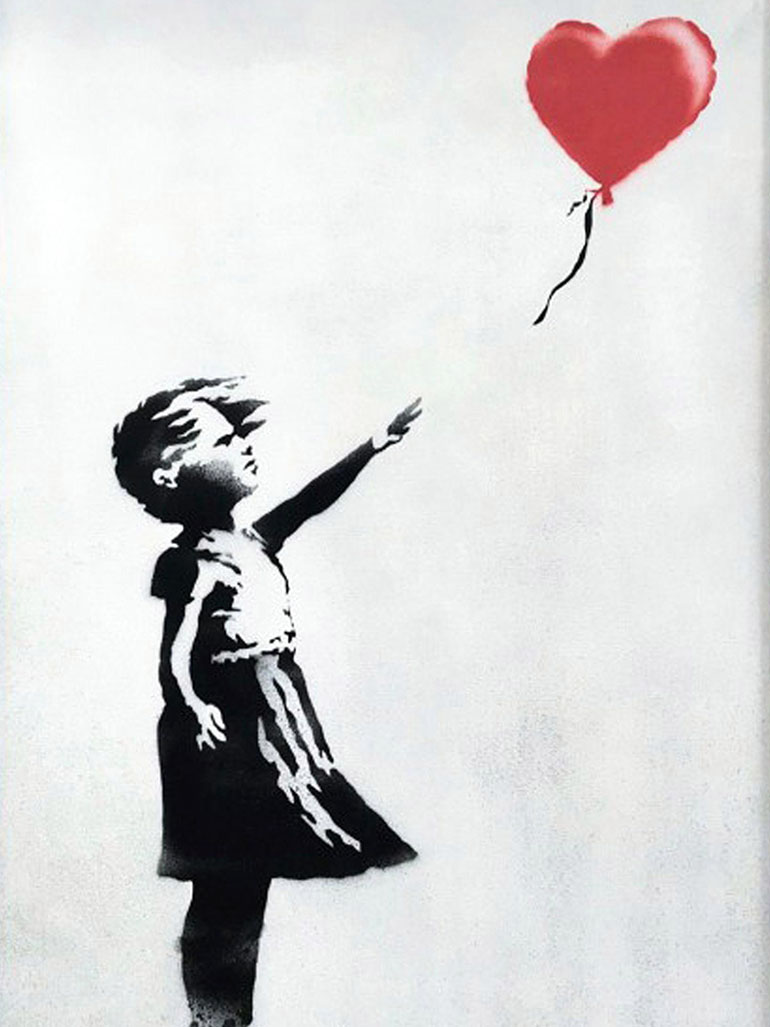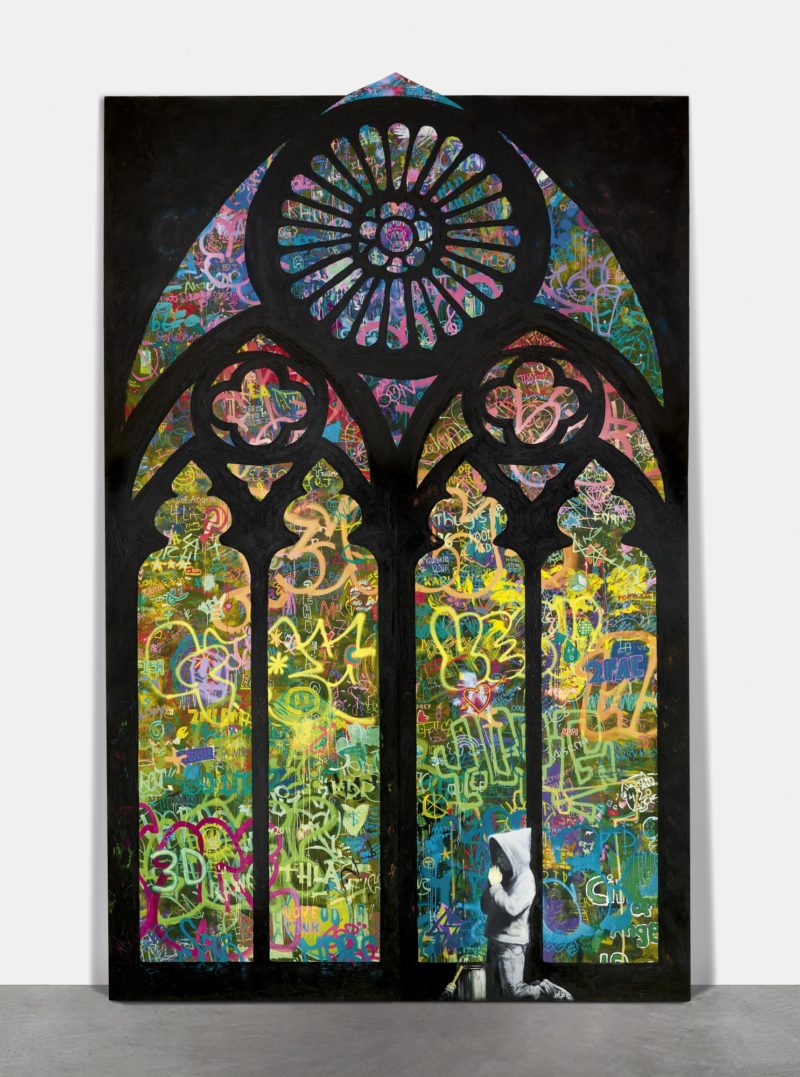
Privately owned
The artwork was sold at Sotheby's Hong Kong in 2021 for .3 million. It is part of a private collection and not on public view.
Introduction
Banksy’s 1 Stained-Glass painting was commissioned by the Museum of Contemporary Art in Los Angeles 2, California. The artwork shows a painted old stained glass window 3 with the glass panes of the window covered with graffiti 4.
At the front, we can see a young boy in street clothes kneeling and praying in front of a paintbrush and a bucket. Unlike most traditional stained glass church windows, Banksy’s Forgive Us Our Trespassing was actually produced for mass consumption. The artwork was inspired heavily by Gerhard Richter’s 5 Cologne Cathedral Window 67.
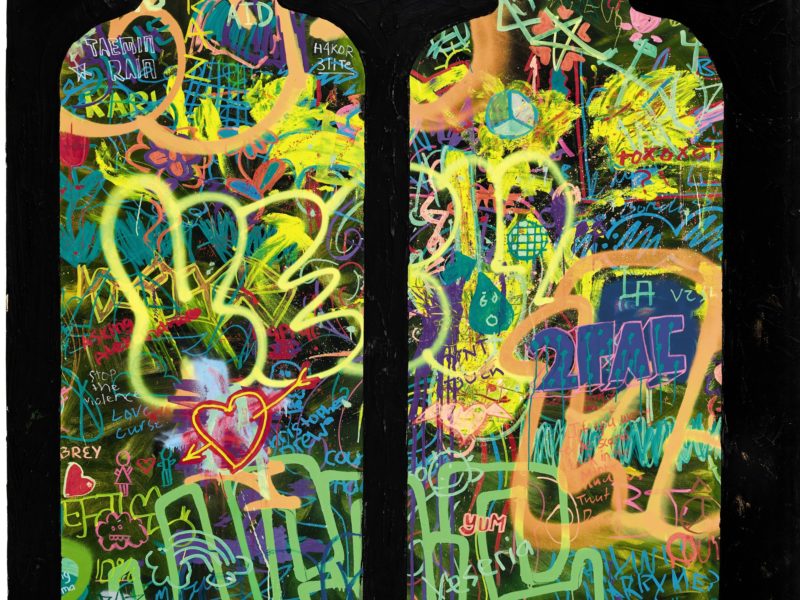
Towering seven meters high, Banksy’s monumental artwork, which was completed in 2011, is the biggest known piece by the street artist 8, who still remains anonymous to date. To create the piece, Banksy worked with a group of public-school students. Banksy asked the students to scribble one-of-a-kind tags, designs and messages on the panels that were unique to them.
The panels were placed in the playing area of the school, where students could participate freely. The result of this participation was a mix of messages and ideas, which further helped to make the work more impactful.
What the artwork shows
One of the more visible messages was a piece stating ‘Paint Over This and Your Dead‘. Most of the art on the panel was created by the kids themselves before Banksy adapted it. The artist later added the kneeling boy.
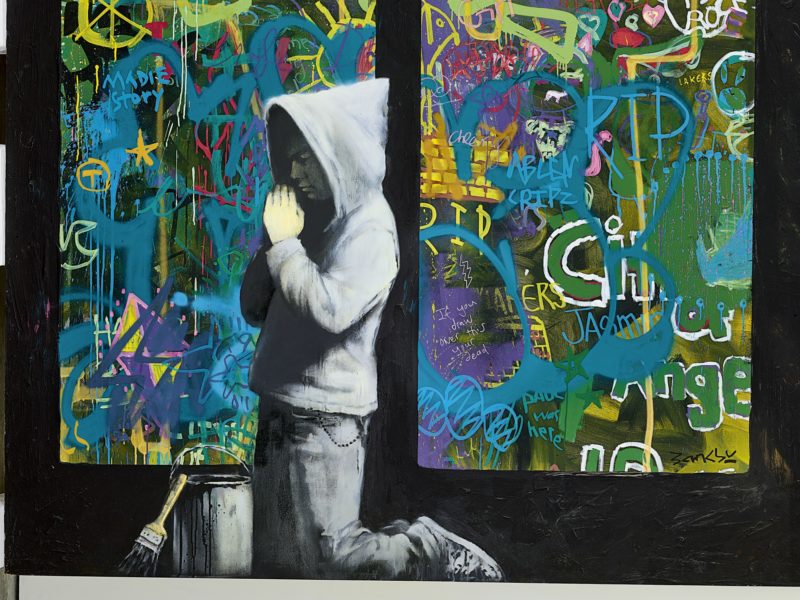
According to close sources, it took approximately 3-4 days for the installation to be completed. In total, it is said that more than 100 students attending 6th to 9th grade at the City of Angels School took part in the project, which was aimed at encouraging public school students to create more art.
This is not the first time that the artist has painted an image of a praying boy kneeling. The kneeling boy is a popular motif that is employed by the artist to communicate his biting mockery and ridicule. This motif was also used for his work, ‘Forgive us Our Trespassing’, which also features an image of a praying boy kneeling beside a can of paint and a brush.
Different versions & Auction
A basic version of Forgive Us Our Trespassing was first seen in Salt Lake City in 2010, one year prior to the opening of the Los Angeles exhibition. Banksy has created several variations since then. In 2010, the image was also used on a poster, promoting the mockumentary Exit Through the Gift Shop.
In March of the same year, the poster caused a stir 910 when it appeared in a London metro station. The image initially featured dripping paint, which was censored for use in the underground to prevent other artists from getting inspired by it. An unknown graffiti artist ended up restoring the missing part without permission.
A smaller version of Forgive Us Our Trespassing is on display at the Moco Museum in Amsterdam 11.
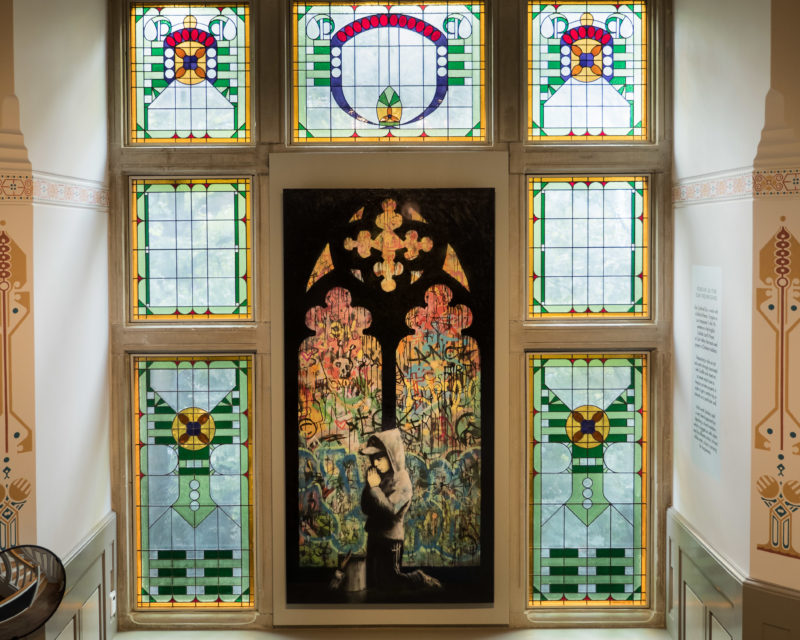
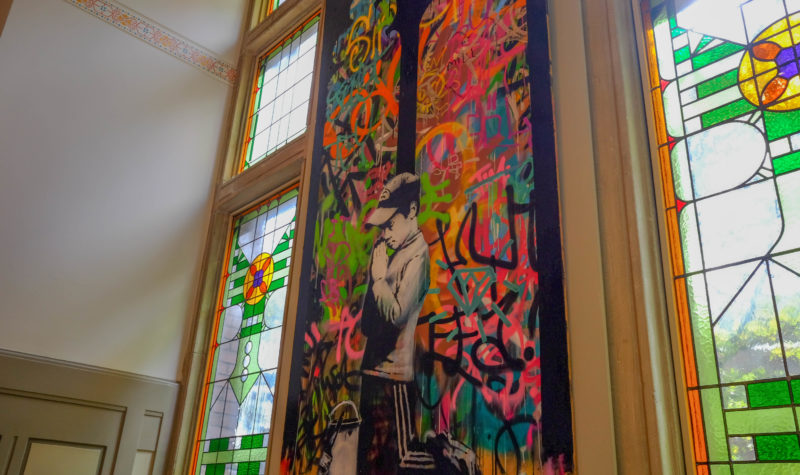
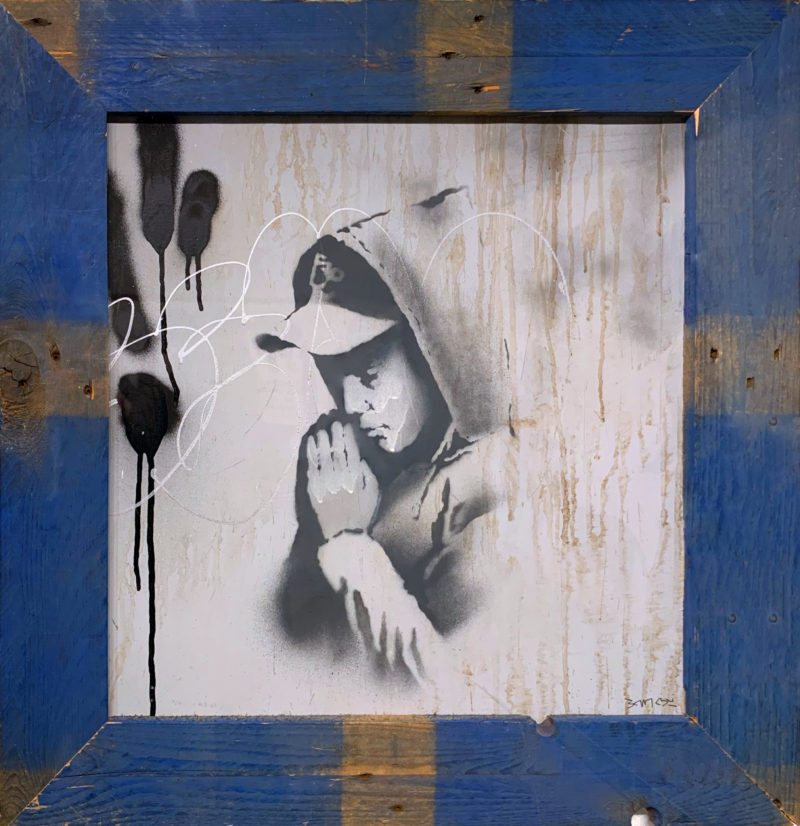
The monumental painting, however, appeared on the auction market in 2020. Sotheby’s ended up selling the work for 8.17 million USD 1213, well above the estimate of 2.04-4.08 million USD.
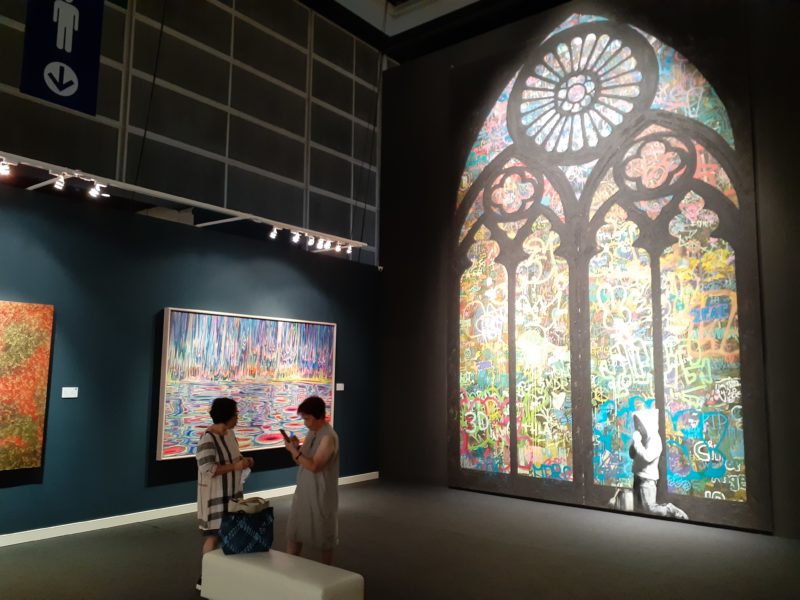
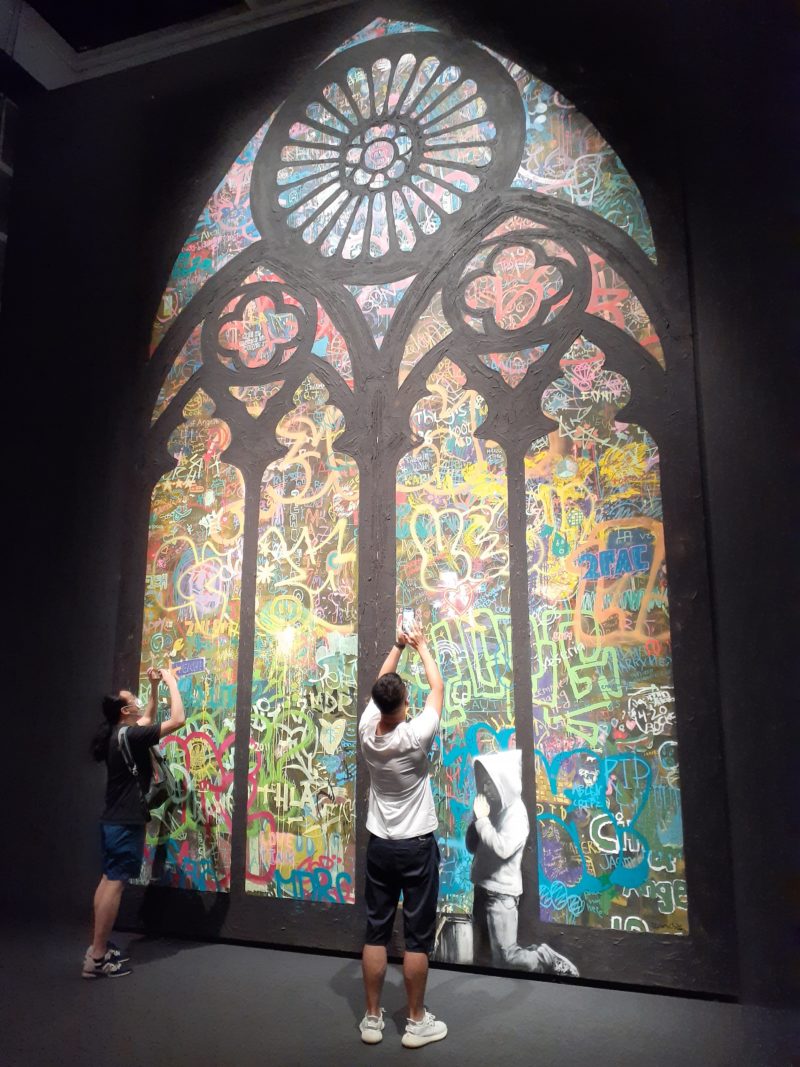
Art in the Streets
Forgive Us Our Trespassing was first presented in 2011 at the groundbreaking 14 Art in the Streets exhibition at L.A.’s Museum of Contemporary Art. It gave an overview of the history of street art and graffiti and featured artists such as Barry McGee 15, Os Gêmeos 16, Shepard Fairey 17, Jean-Michel Basquiat 18, Keith Haring 19 and others.
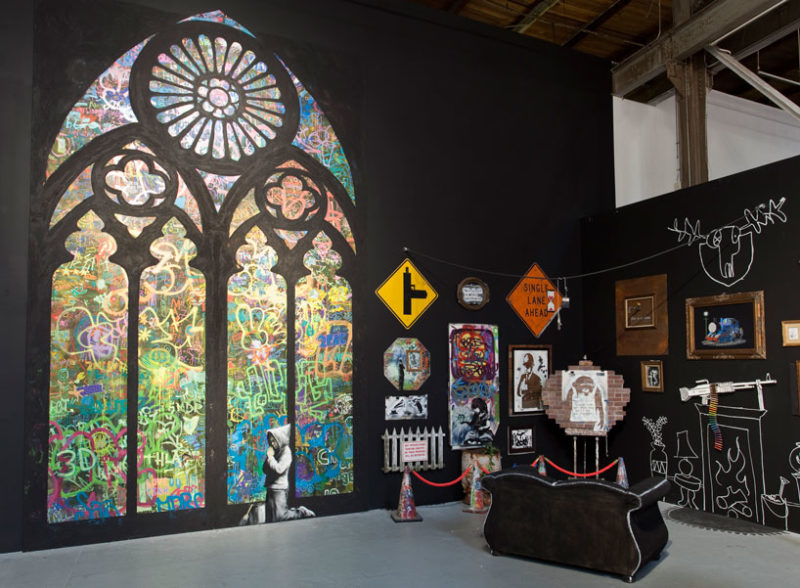
Banksy teamed up with the museum to provide free entrance to the show on Monday. Commenting on his sponsorship, the artist said 2021:
I don’t think you should have to pay to look at graffiti. You should only pay if you want to get rid of it.
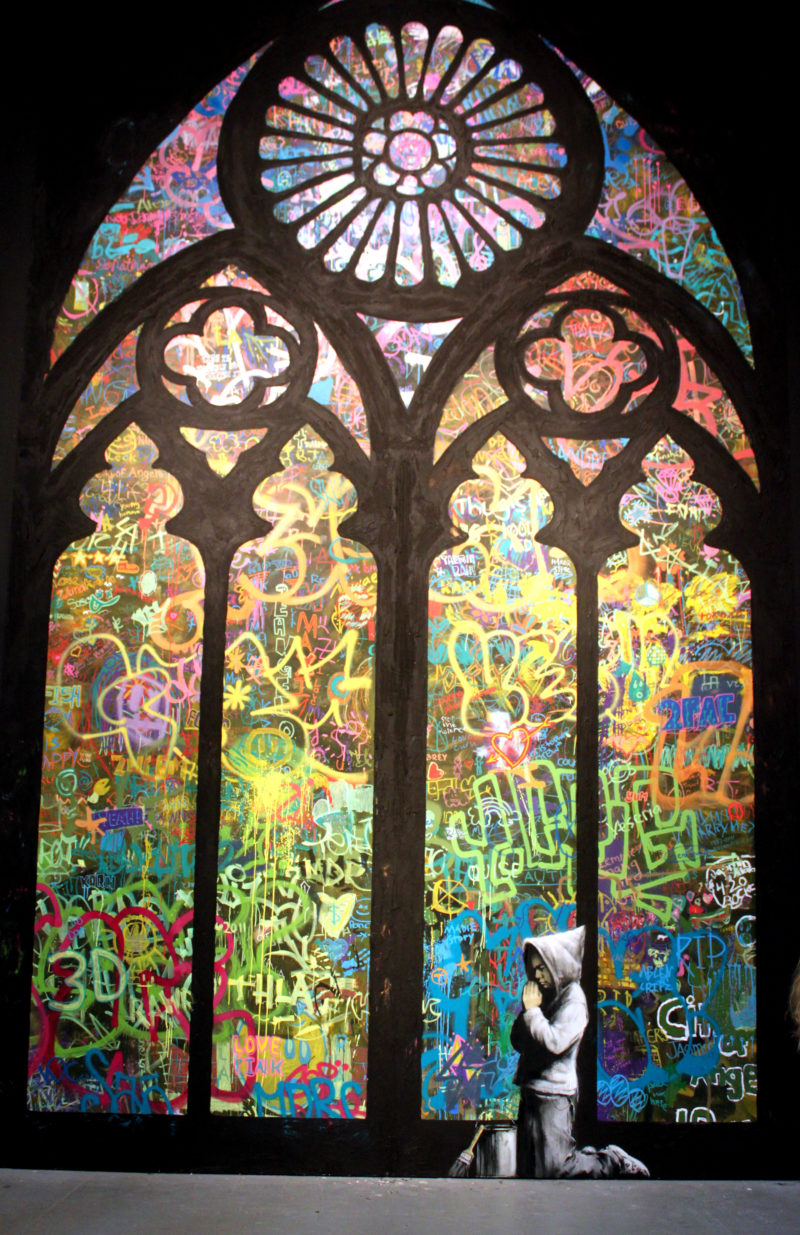
The meaning
By incorporating an image of a kneeling praying boy, the artist is asking for forgiveness while also acknowledging the concerns of those righteous people that view his works and the works of other graffiti artists as vandalism 22. However, ultimately, the graffiti artist is communicating that his works are not meant to harm people and is therefore asking for more understanding from the observers.
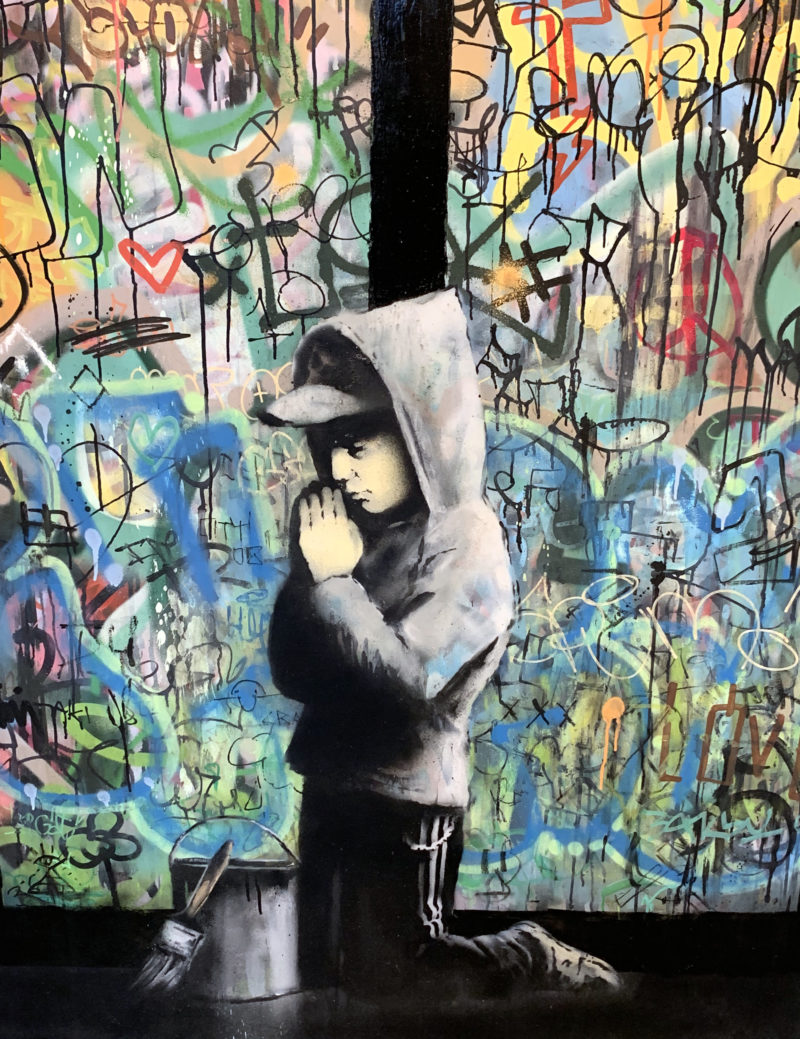
Another interesting aspect of this work is the change in the subtext by referencing stained glass, a medium that was invented in medieval Europe and found inside Gothic churches. These windows showed stories taken from the bible and, in combination with the sun, brought them to life.
In Banksy’s case, he used mass collaboration and utilized paint instead of glass, using an image of a graffiti artist instead of saints and other biblical figures. The church setting exposes Banksy’s edgy humor: An artist vandalizing windows inside of a sacred place is just outrageously blasphemous. At the same time, the religious environment emphasizes the seriousness of the situation and authentic repentance.
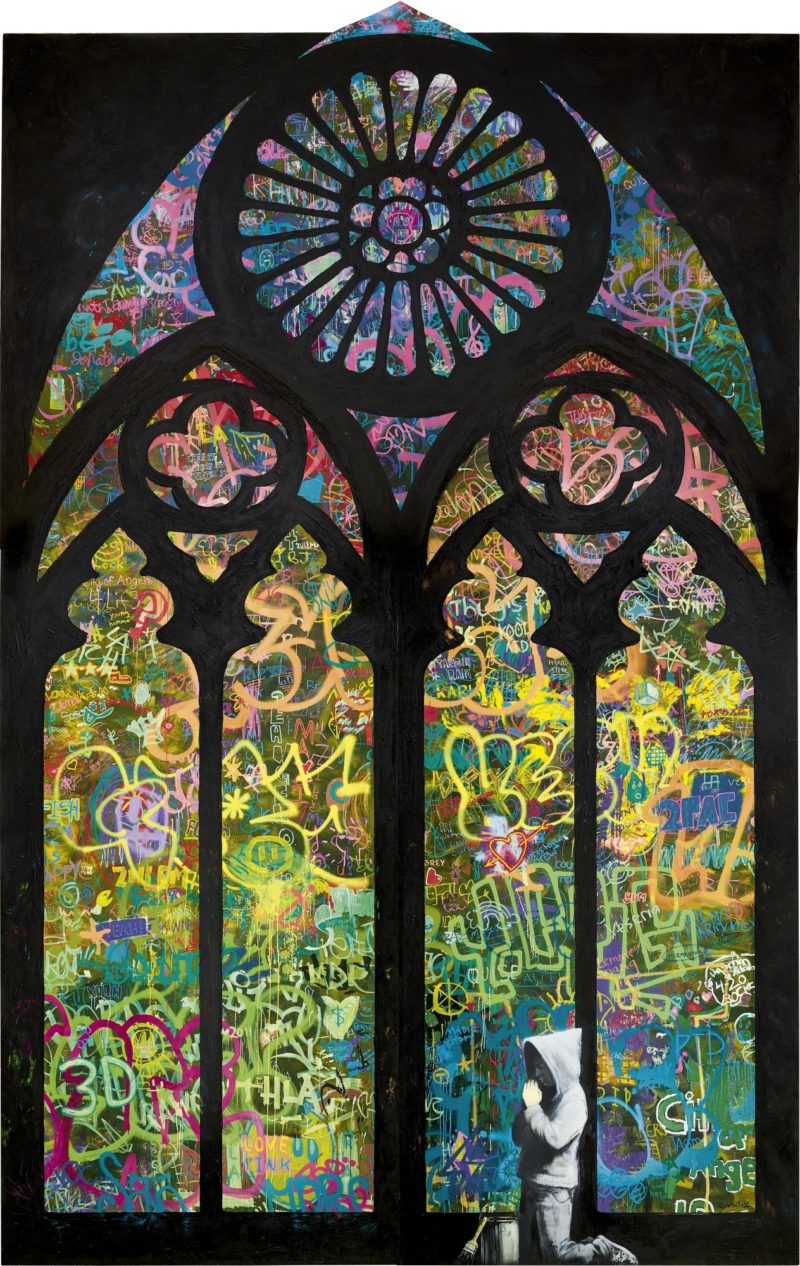
About the artist
Banksy is one of the most recognized and successful graffiti artists in the world. His works have been known to fetch well over millions in euros from collectors in all corners of the globe.
The British graffiti artist has kept his identity secret for decades and is easily recognizable thanks to his unique style and mastery. Street art and graffiti are regarded as criminal offenses in many parts of the world, which explains why the artist has remained undercover for all these years.

